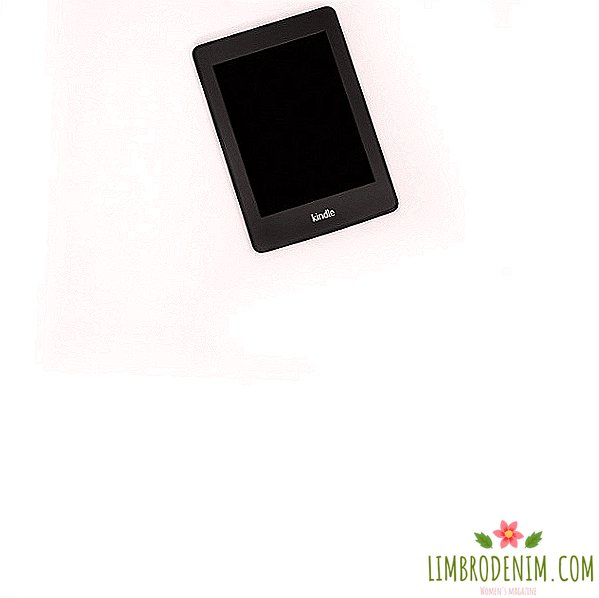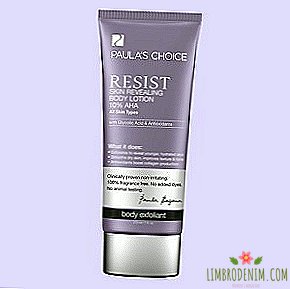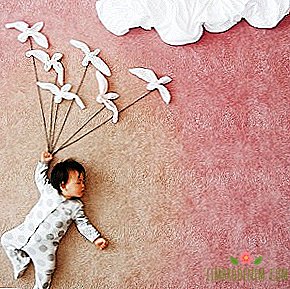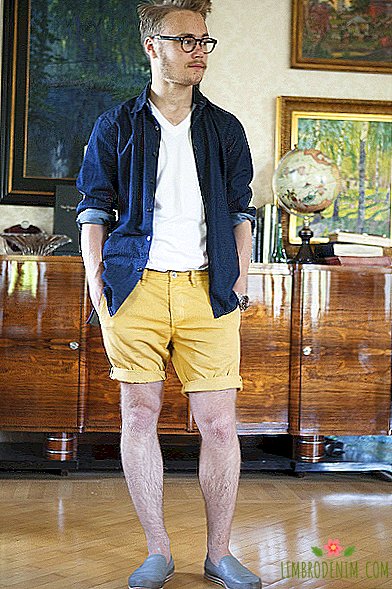From luxury to the mass market: How pearls became available
Pearl jewelry has a rich history. Today, young brands and progressive designers make pearls not only classic Chanel necklaces, but also fancy hair ornaments and minimalistic mono-earrings. Remember the pearl spiral earrings that Y / Project presented in the fall-winter collection - 2018, or the Gucci Balaclava at the cruise show of the same year, reminiscent of amphibian scales. Today, natural pearls can be found even in the assortment of the mass market. We understand how it became available.
Text: Anna Eliseeva

How to find him
History is silent about who first found the pearls and even when and at what point of the planet it happened. But it is interesting that, starting with the first mentions in antiquity and ending with the XX century, the gem was considered a symbol of luxury and was available only to members of the privileged classes. The first references to pearls date back to 2300 BC in China. In the sarcophagus of the Persian princess, which dates back to 420 BC, was found a fragment of pearl jewelry. Cleopatra, according to legend, cut the pearl in a glass of wine to prove to Mark Antony that she can arrange the most expensive dinner in history. In the first century BC, Julius Caesar passed a law according to which only the ruling class had the right to wear pearl jewelry.
In the dark ages, the precious minerals allegedly took knights with them into battle, believing that he would protect them. Over time, the demand for pearls only grew: at the end of the XIX century, for example, even pearl fever was observed in the upper reaches of the Mississippi River. The hunters killed thousands of mollusks to find the very "bead" among them.
The most famous is the pearl of the XVI century called “Peregrina” - it belonged to Maria Tudor, later - to Napoleon I’s elder brother Joseph, then to his nephew, Napoleon III. In the XX century, it was bought by the actor Richard Burton at an auction for $ 37,000 and presented to his wife Elizabeth Taylor as a gift. In 2011, Peregrina went under the hammer for 11.8 million dollars.
Despite the fact that at the beginning of the 20th century, pearls were grown in large quantities in the world, it still remained available only to actresses, princesses and aristocrats. The main trendsetter of that time was Coco Chanel - the designer did not part with pearl necklaces that she wore in combination with jewelry (but this fact hardly affected the status of the precious mineral). Later, simple and elegant strings of pearls were fashioned by Grace Kelly and Audrey Hepburn, who wore them both with evening dresses and casual wear.
Already in the 80s, the attitude to pearl jewelry ceased to be so sacred - long beads made from pearls were also on the cheeky Madonna, who performed in explicit outfits and in the punk collections of Vivienne Westwood. In the 90s, mass fashion struck out pearls as outdated — a mineral was perceived as an attribute of the classics. But he was still loved by business women, faithful to an elegant style: Nancy Reagan, Barbara Bush, Princess Diana.


How is it mined
In theory, pearls can form in a variety of shellfish, but its main source is bivalves. Pearl formation is a protective reaction of the body. When a foreign body, a grain of sand or a parasite, falls into the shell of a sea oyster or river mussel, they cover it with nacre layer by layer for several years. Therefore, wild pearls are so rare - it is just an accident that occurred with one mollusk out of tens of thousands.
Until the 20th century, divers hunted for pearls, often risking their lives - lovers dive without special equipment to great depths. But that all changed in 1893, when the Japanese Kokichi Mikimoto received the first artificially grown pearl - she had all the same properties as the "wild" pearls. The only difference was that the foreign body was placed on the clam manually. By 1935, there were already 350 pearl farms in Japan producing 10 million beads a year. And today they are all over the world.
One of the largest companies for the production of organic pearls (not grown, but artificially created) was the Spanish brand Majorica. She patented a technology that, according to the company, is “identical” to the processes in the clam shell. In fact, opaline crystal (frosted glass) is covered with numerous layers of the essence, "obtained from marine organic elements." However, part of the production technology of the brand keeps a secret, so it is not known which organic substances are used. The price of a Majorica product can be cheaper than Mikimoto's identical in structure jewelry hundreds of thousands of times. If the first can be considered a mass market in the world of jewelry and bijoux, then the second can be considered "high jewelry art".
What determines the price
"The cost of a pearl is influenced by many factors: uniformity, intensity and depth of shine, size, color, origin, nacre layer thickness, absence of mechanical damage and the number of natural (natural) defects. It is a mistake to believe that the price of only wild pearls can be high. Many famous farms like Mikimoto have long achieved an ideal result, the cost of such a pearl will not be inferior to a rare analogue, "says Lilia Hazhieva, designer of the brand Copine Jewelry.
Today, China is considered the leader in growing freshwater pearls: in 2010 it produced 20 tons (Australia 10 tons in the same year). Because of this amount, pearls are becoming more and more accessible. Among the marine distinguish "Akoya", which Mikimoto first grew, - these pearls more often than other species are obtained round in blue, cream and pale pink shades. Tahitian pearls are valued for their dark colors: black, gray, blue, green and purple. In the waters of Australia, Myanmar, Indonesia, the Philippines and Japan, pearls of the southern seas are grown - one of the largest. But the pearls of "Melo Melo", "Konk" and "Abalon" are mined only in the wild conditions, because of what they are considered the most valuable. The first ones have a rich yellow color, the second - bright pink, and the third - intense mother-of-pearl.
"We use only baroque freshwater pearls, it has an irregular shape. There is no fundamental difference, there is a difference in price and laboriousness of cultivation. The pearl layer of a sea pearl is usually thicker, but only an experienced specialist can determine its origin. We directly cooperate with suppliers Pearls from Asia. When the party arrives in Moscow, we manually select suitable pearls in shape, color and size and immediately form pairs, "adds Khazhieva.


Is it ethical pearl production?
When asked if the mollusks die after pearls are extracted from them, the founder of the American brand The Pearl Girls, India Rose, answered unequivocally, yes. In her blog, she writes that the life of oysters and mussels on farms depends on how good they make pearls. If it turned out to be of high quality, then the next foreign body will be planted in the oyster, and if not, then, most likely, it will simply be eaten, and the shell will be allowed into the production of another decor - for example, buttons.
Advocates for the production of pearls indicate that the mollusks do not have a central nervous system, and therefore are not able to feel pain as we feel it, for example, we. But PETA finds arguments against it. According to the organization, animals are stressed when foreign bodies are planted in them, placed in cages and moved to water of different temperatures. In addition, fragments of the soft tissue of other mollusks are transplanted into the shells, which help the oyster or mussels to start producing nacre. It seems unacceptable, of course, to kill both animals and reuse them for growing new pearls.
And yet, pearl producers have rested on the benefit of such farms for ecology. So, Josh Humbert, who runs Kamoka Pearl family business in French Polynesia, notes that cages are necessary to protect mollusks from predators, such as sea turtles. Rose also points to the advantage of growing pearls, because mollusks are natural water filters. In her opinion, the discovery of new responsible and environmentally friendly farms contributes to the purification of the ocean.
At the same time, alternatives to pearls exist and will exist both in the mass market and in niche brands that advocate for eco-friendly and ethical production. Natural pearl-like beads are made of glass with the addition of wax or celluloid. And the Los Angeles brand CLED, opposing thoughtless production and pollution of the planet, creates imitations of pearls from recycled glass bottles. Separate attention deserves a beautiful brand instagram.
Do you need pearl care
"Do not forget that the pearls are quite fragile and can be easily scratched. It is necessary to protect it from drops, do not use any chemicals for cleaning, so as not to spoil the color. You can wash the pearls under filtered water and wipe with a soft cloth. With proper care and neat wearing he will live a very long time, "- said the designer Copine Jewelry. And the brand Mikimoto recommends avoiding the contact of pearls with any cosmetics and perfumery, stored in special soft cases for jewelry separately from the rest. But not for too long: pearls can be “dehydrated” while in a dark impenetrable box.
PHOTO:wikimedia, copinejewelry, yurchello108 - stock.adobe.com, dream79 - stock.adobe.com, W.Scott McGill - stock.adobe.com, Tanaly - stock.adobe.com





